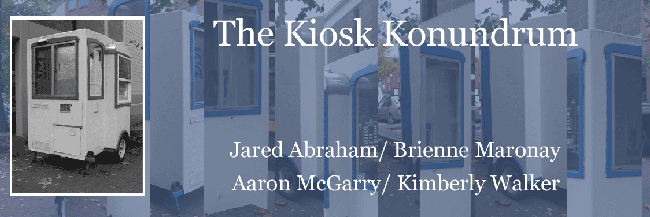
After analyzing the results of our case study, we found that the indoor temperature of the falafel kiosk approached but never actually obtained the same reading as the outdoor temperature. Thus, the plywood and canvas building envelope of the kiosk was successful in retaining at least a portion of the heat gained during the day from solar, human, and mechanical heat. During the interview, Alexander said that the kiosk seemed to always be at or above a comfortable temperature even on a very cold day. This was the first indication that pointed to the inherent inaccuracies of our hypothesis.
Our hypothesis confidently states that all heat retained in the kiosk would be lost, so that the indoor and outdoor temperatures would reach equilibrium. Therefore, our hypothesis was incorrect. The lowest indoor temperatures never exceeded 53 degrees F while the outdoor temperatures maintained a low of 43 degrees F. Furthermore, we found that the plywood building envelope of the kiosk (while providing very little R value during the evening) actually retained too much heat durring the day. The largest indicator of this was the 130 degree temperature recorded by the "high" temperature datalogger during business hours ( Fri. Nov. 21 @ 2:00pm). We believe that the reason for such a high temperature is a lack of ventilation in the ceiling plane.